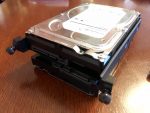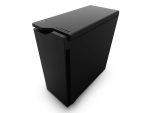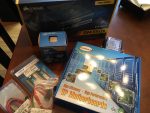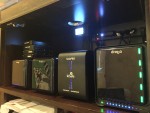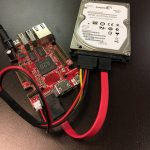Have you ever wondered if mounting a hard disk drive on its side or even upside-down affects its lifespan or reliability? According to every drive manufacturer, it’s perfectly acceptable to mount a hard disk drive in any orientation as long as it’s not tilted and has sufficient cooling.
Terabyte home
14 Drives For 14 Ports: A Case For FreeNAS
I’ve written a few times about my quest to build the ultimate home storage/server rig. But one issue was surprisingly vexing: What kind of case has room for a dozen or more hard disk drives? In this update, I’ll talk about the various options as well as the one I ultimately picked: The NZXT H440 (and a Corsair power supply).
My FreeNAS Build: Supermicro X10SL7, Intel Haswell Xeon, ECC RAM
Today I’m going to dive into the hardware I selected for FreeNAS, starting with the motherboard, CPU, and memory. FreeNAS runs on any PC hardware, but building a reliable and scalable storage solution means picking higher-end components. I selected a Supermicro X10SL7 server-class motherboard with 14 (!) SAS/SATA ports paired with an Intel Xeon E3-1231v3 (Haswell) CPU and ECC memory from Crucial.
Hello FreeNAS! Goodbye Drobo and Iomega…
Long-time readers of my blog know of my love for Drobo, but the time has come to say goodbye. My old Drobos (and Iomega ix-4) are showing their age and I decided to go in a different direction: I’m building a FreeNAS server. In this article I’ll talk about my thinking behind this move; later posts will talk in more detail about the hardware and software setup.
Here’s Something Your Raspberry Pi Can’t Do: Gigabit Ethernet and SATA in the Olimex A20-OLinuXIno-LIME2
I’ve really enjoyed experimenting with the Raspberry Pi, and have even deployed a few as UNIX servers in my home and office network. The quad-core performance of the latest Pi models is awesome, but serious I/O limitations remain. With just one USB 2.0 interface shared for all network and storage operations, you aren’t going to […]
